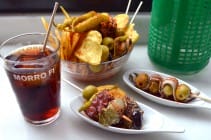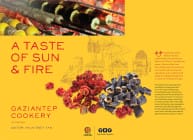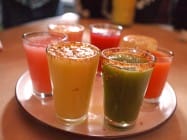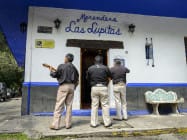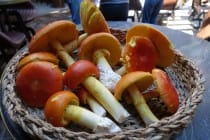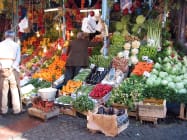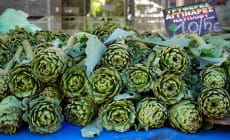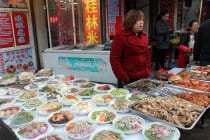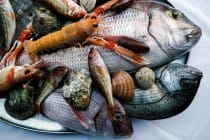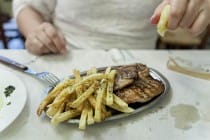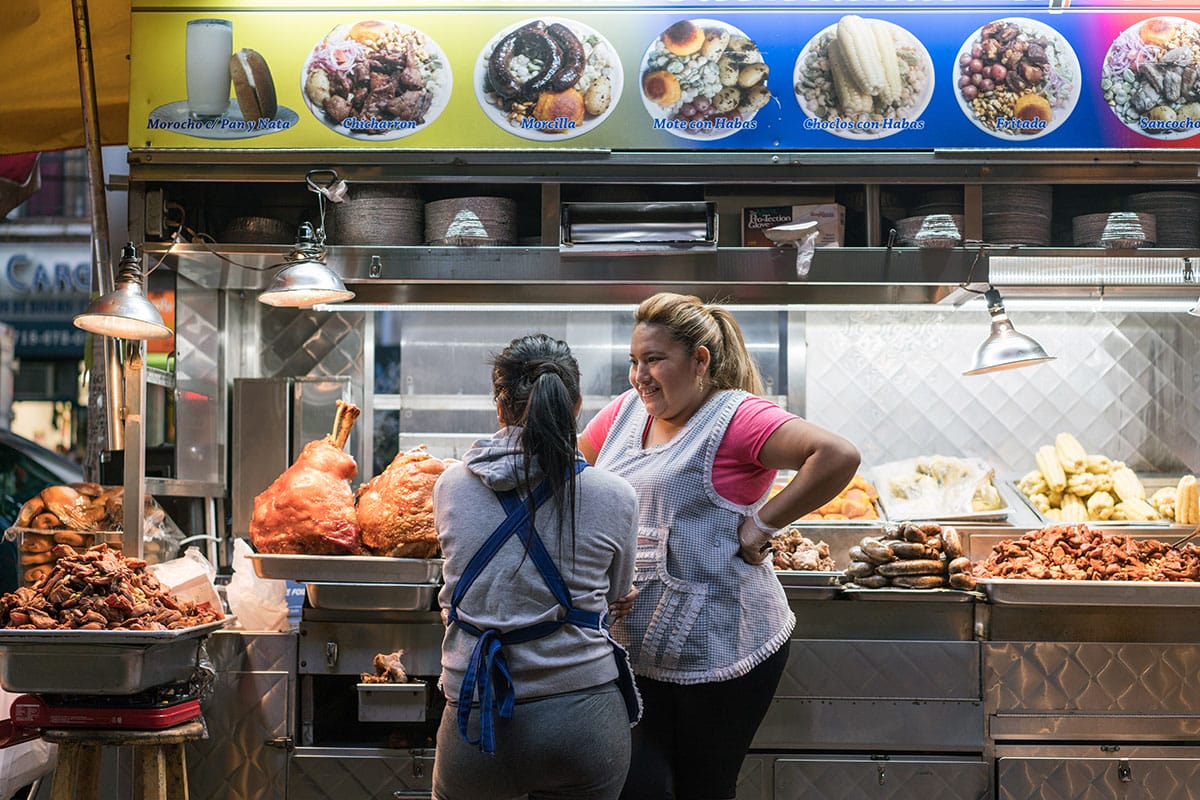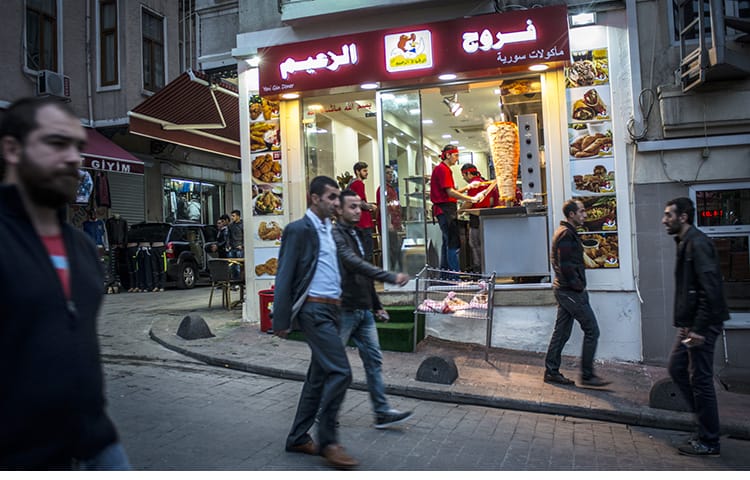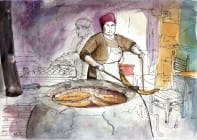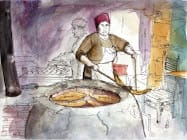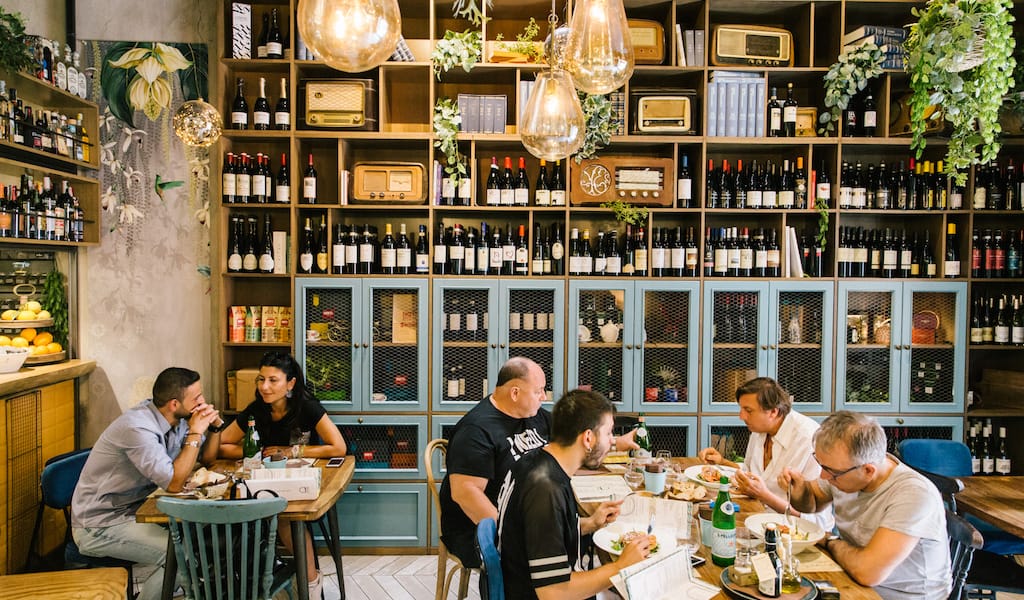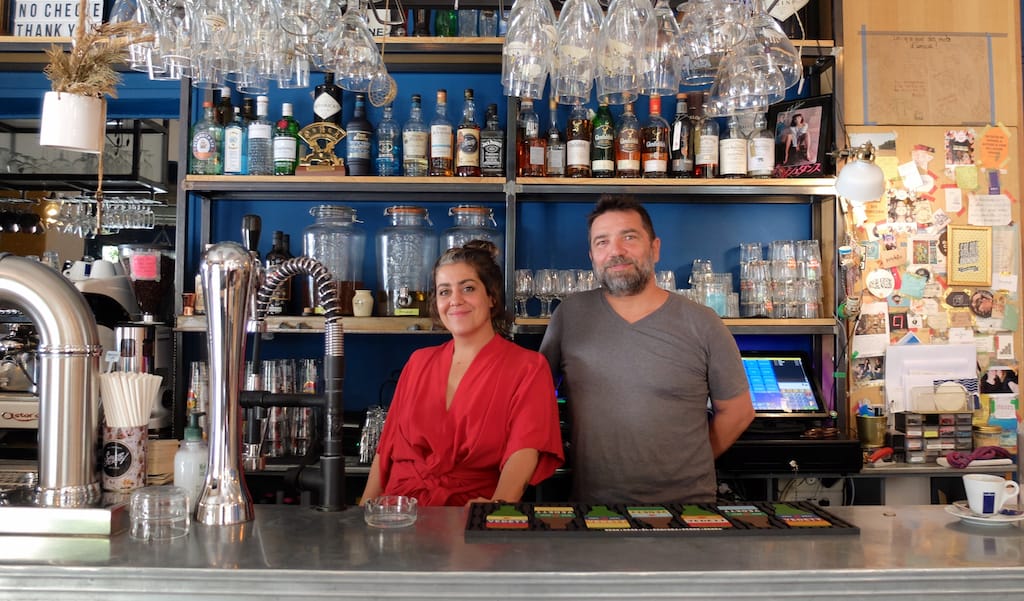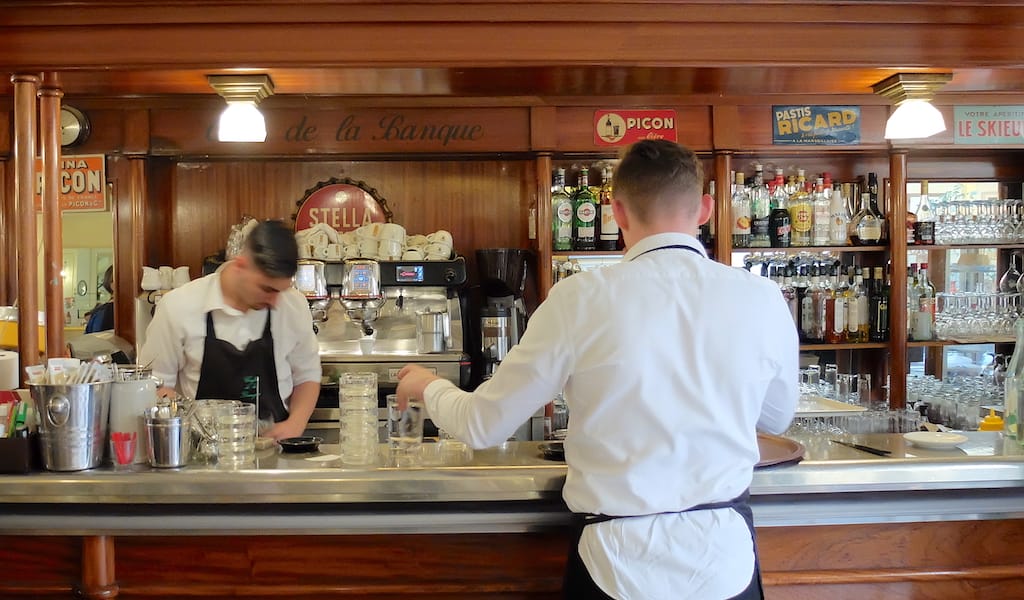The typical Neapolitan breakfast is fast, often consumed standing at the espresso bar. A croissant and a quick coffee – and, boom, the day begins.
Many people in the English-speaking world, however, will use coffee bars and cafès as a place to relax or work. They bring computers, connect to the Wi-Fi and, ordering just one coffee, may even sit for hours.
Three years ago, a group of entrepreneurs decided it was time Naples had a bar where people could indulge in a lazy morning breakfast, a slow midday meal or a long afternoon tea – a place where the chairs are comfortable, the tables are an inviting wood and you are encouraged to stay and make your phone calls, write your papers and chat with friends. A bistro that encourages an indulgence in idleness, sitting between old radios and vintage chandeliers in a space where design and food are both thoughtful and high quality. It’s holistic care: for the mind and eyes and for the stomach.
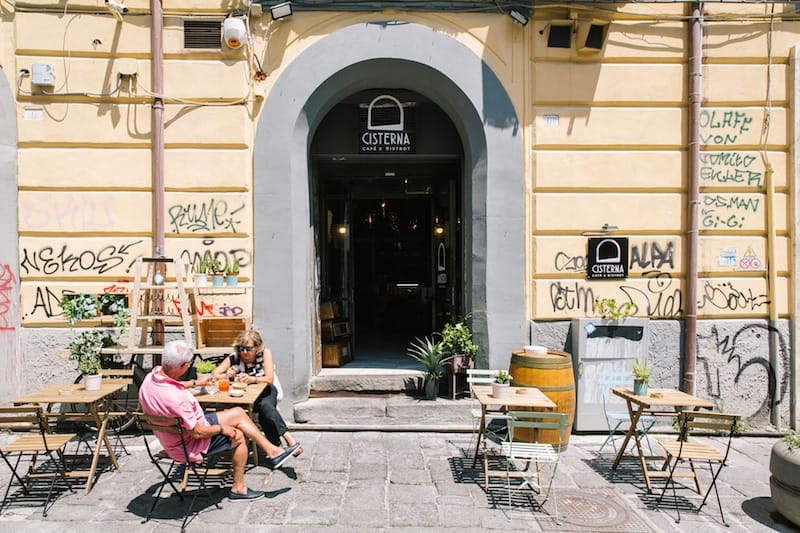
We are in the true heart of Naples, between Piazza Dante and Piazza del Gesù. In a maze of narrow streets where half the fun is getting lost in search of tiny cafès and bars with live music, Cisterna Cafè & Bistro was born inside the shell of an old building on Via Cisterna dell’Olio. The road – and the bar – is so called because of the four very large cisterns that once stood here, used to preserve the olive oil that arrived in Naples from all over.
The Neapolitan Salvatore and Attanasia, who is of Greek origins, are the two friendly baristas-cum-bartenders who welcome customers each morning. “Here, we have clients who come to have breakfast and then they stay all morning working,” says Salvatore.
A bistro that encourages an indulgence in idleness, while sitting between old radios and vintage chandeliers.
We’re sitting upstairs next to a vintage tube radio. Taking in the delightful atmosphere, we open the breakfast menu to survey our choices. The French “Breakfast in Paris” includes croissants with butter and jam while the American “New York Breakfast” boasts bacon, eggs and caffè Americano. We decide to keep it local though and see what a slow Neapolitan breakfast looks like: a slice of fresh caprese cake, bread with jam and coffee served in an iconic Bialetti Moka pot.
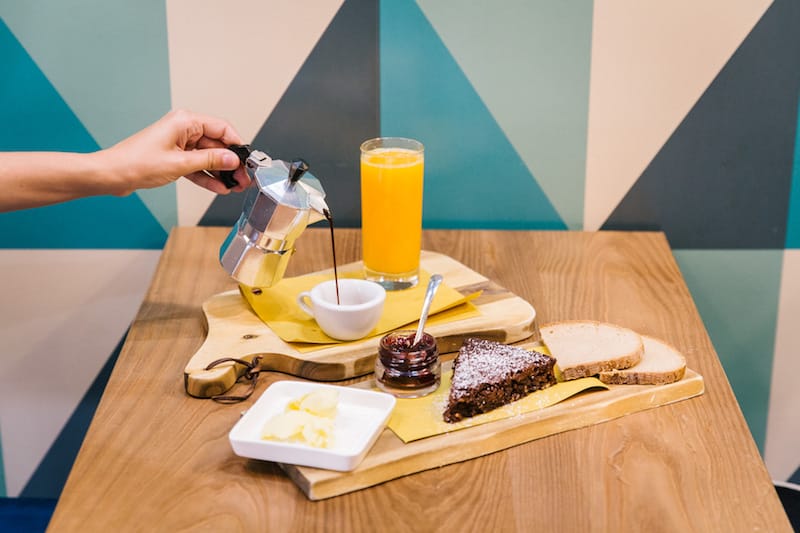
“We really like the idea of an international format set in an absolutely Neapolitan reality,” Salvatore says. “We even love the people who come here and work all morning, but we invite them to taste Neapolitan food.”
Since we already opted for the Naples breakfast, we stay and work. Next to us are two British women. Sofia, a Londoner, says she comes often to use the Internet, bask in the air conditioning and, of course, eat a delicious meal. After putting pen to paper, breakfast gives way to lunch and Cisterna invokes the trattoria, offering up ancient Neapolitan dishes. The mixed pasta – which involves many different pasta shapes all of medium size (spaghetti, penne, conchigliette, fusilli, lagane) – with potatoes and provola proves delicious. In Italy, you can never have ever enough pasta, so we also sample the spaghetti alla Nerano, a dish that takes the name of a village on the Amalfi Coast where it originated. The young chef Francesco de Luca says it’s one of the most popular dishes there. “It should be made with provolone del Monaco, zucchini and garlic scapes – but only of excellent quality, otherwise the result is a disaster,” he insists.
In summer, salads reign and come in a thousand different iterations: with rice, with pasta, with tomatoes, the variations go on. We keep on our traditional path and opt for the Italian flag in food form: the Caprese salad, with green basil, red Sorrento tomatoes and white bufala mozzarella. Antonio, another customer who enjoys eating at the café while working or meeting friends, leans over to recommend the fresella (dry bread) with corn and tomato tuna.
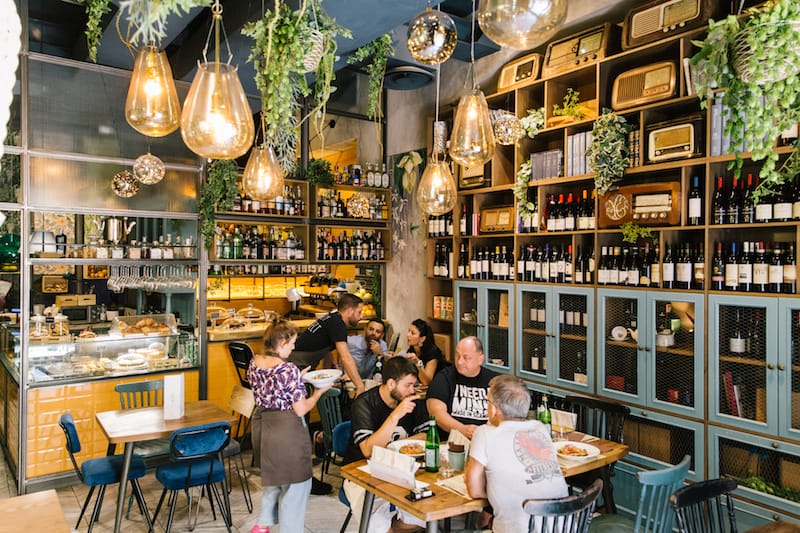
After lunch, Cisterna becomes a tea room – a difficult endeavor in a city of coffee like Naples, but successful nonetheless. In the evening, it finally becomes a restaurant, one where “the Neapolitan cuisine is revisited in an international key,” Francesco says. “The paccheri, for example, are stuffed with cream of mussels and dried tomatoes, the ravioli seasoned with rabbit.” It’s all well and good, but it seems to us that the customers are heartily enjoying the more traditional dishes, like spaghetti with sea urchins and codfish casserole.
Though Cisterna has found locals who love their formula for encouraging comfort, conversation and connecting to the Internet… when it comes to food, well, we Neapolitans are conservatives. Luckily, Cisterna caters to every crowd – except perhaps those wanting a standing breakfast.
 May 3, 2021 Wheel Hospitality
May 3, 2021 Wheel Hospitality
Bars, cafés, taverns and restaurants have historically functioned as meeting spots for […] Posted in Barcelona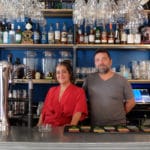 October 13, 2020 Le Parpaing qui Flotte
October 13, 2020 Le Parpaing qui Flotte
A man leans on the zinc bar, reading La Provence with his café. In wanders a helmet-clad […] Posted in Marseille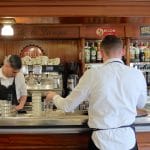 February 21, 2020 Café de la Banque
February 21, 2020 Café de la Banque
Some of Marseille’s most majestic buildings surround the Estrangin métro stop: the […] Posted in Marseille
Published on August 09, 2019
Related stories
May 3, 2021
BarcelonaBars, cafés, taverns and restaurants have historically functioned as meeting spots for all kinds of urban communities, from intellectuals to politicians and artists –revolutions have even been planned around the table. Nowadays in Barcelona, another community, one that has flourished in numerous cities around the world, has started gathering in these types of venues: cyclists.…
October 13, 2020
MarseilleA man leans on the zinc bar, reading La Provence with his café. In wanders a helmet-clad father-daughter duo, searching for sirops (a sweet cordial) to cool off after their scoot. She looks hungrily at the platter of cookies on the bar, freshly baked for that afternoon’s snack. Beside them, the bartender peels a fragrant…
February 21, 2020
MarseilleSome of Marseille’s most majestic buildings surround the Estrangin métro stop: the American consulate, the ornately sculpted Caisse d’Epargne bank, and the Napoleon-style Préfecture. Between them sits an equally iconic institution, Café de la Banque. Yet while its high-profile neighbors deal in banking and bureaucracy, this spot serves something more essential: a dependable place for…

















